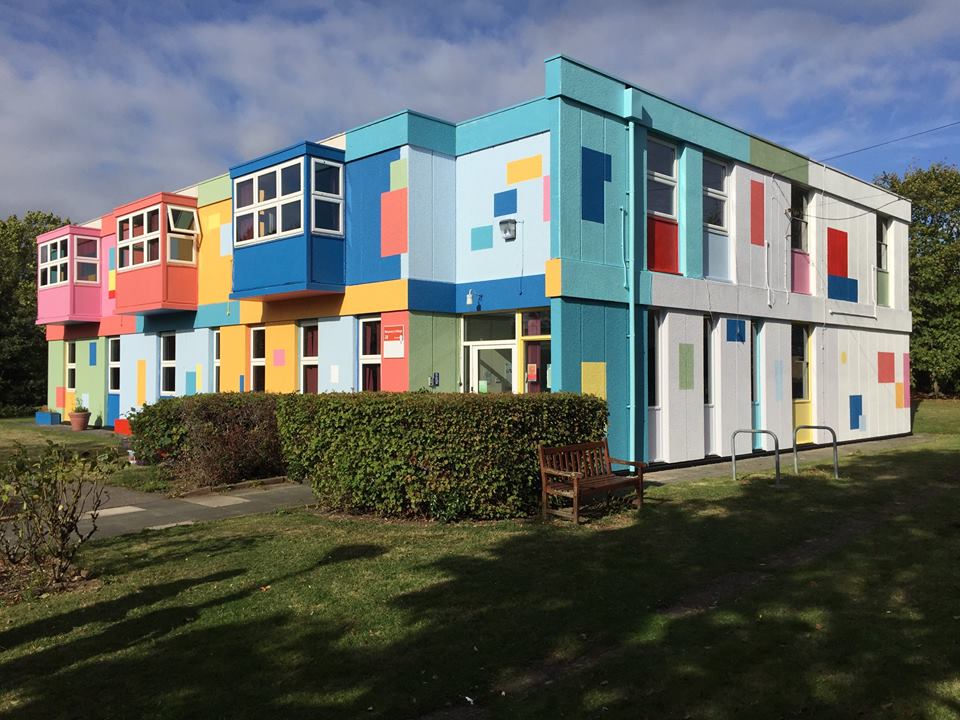Dull white walls and no colours.
That was a sight Tim Shaw became used to when he was visiting one of his best friends in an inpatient mental health unit seven years ago. He was shocked at the bland nature of the physical environment.
"She was in a very vulnerable state and we just couldn't believe the place she woke up and opened her eyes in was so white and bland and clinical," Tim remembers.
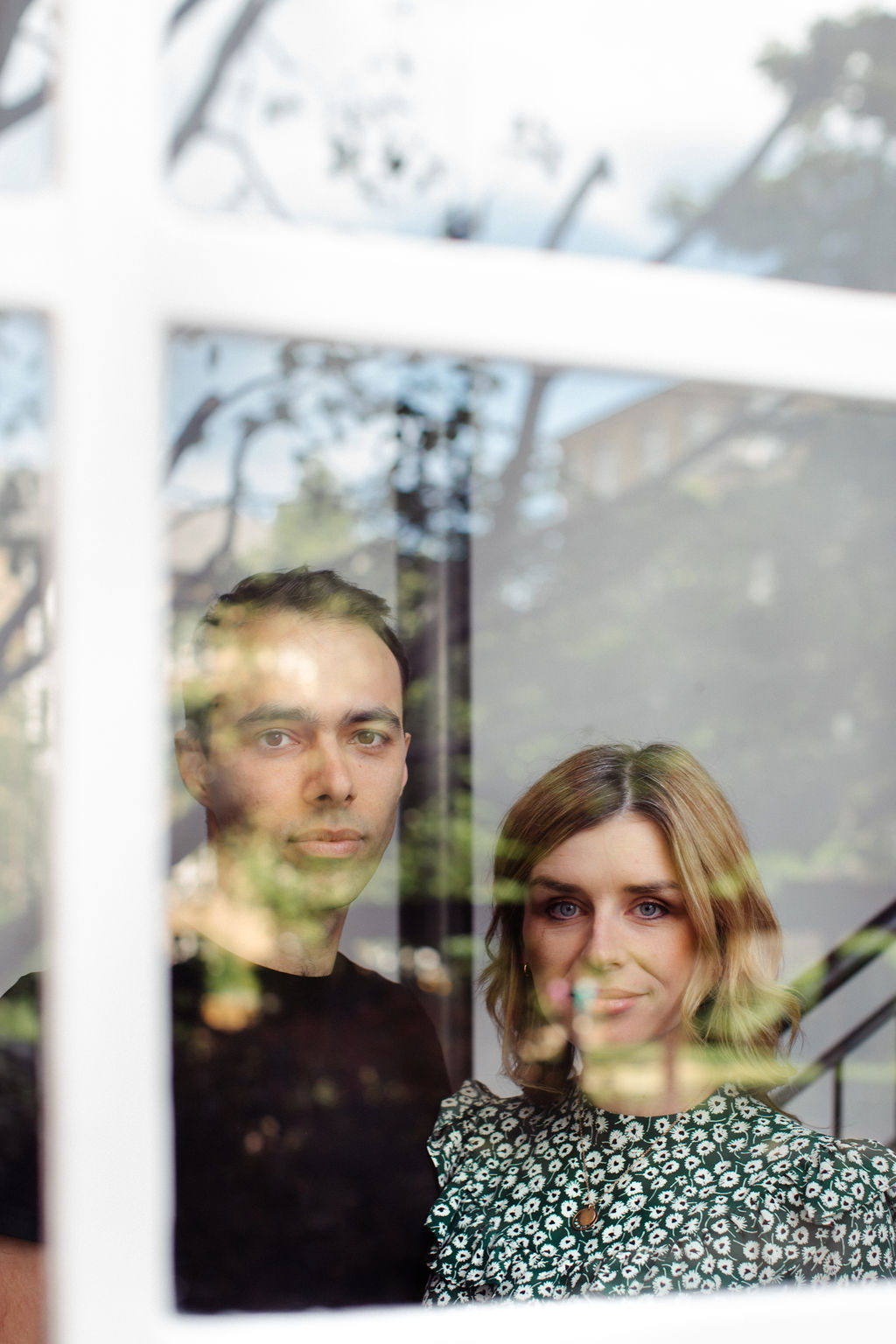
Together with his partner Niamh White, he decided to challenge the look of mental health units.
As an artist and curator working for an art school, Tim and Niamh could both draw on their professional backgrounds.
Over the years, their passion for bringing colour, life and creativity into mental health wards has been their motivation. Tim says: "These places have some really creative people but are completely sapped of humanity."
The first project
Finding a unit that would give them a chance was the first obstacle they had to overcome.
"No hospital wanted us. It took us a year and a half before anyone let us in."
Finally, eleven artists were involved in the first project that re-envisioned the physical environment of a unit in South West London.
Still, in the 18 months that followed, they often were rejected by hospitals. Some units gave the charity a chance, resulting in two or three projects a year — just enough to get by.
But then, it suddenly changed. More attention led to more units reaching out, recognising the unique nature of what they were offering.
"Lots of people do art in hospitals, but not a lot of people do very co-created work in inpatient mental health units."So we made it a charity and dedicated our lives to bringing art to inpatient units."
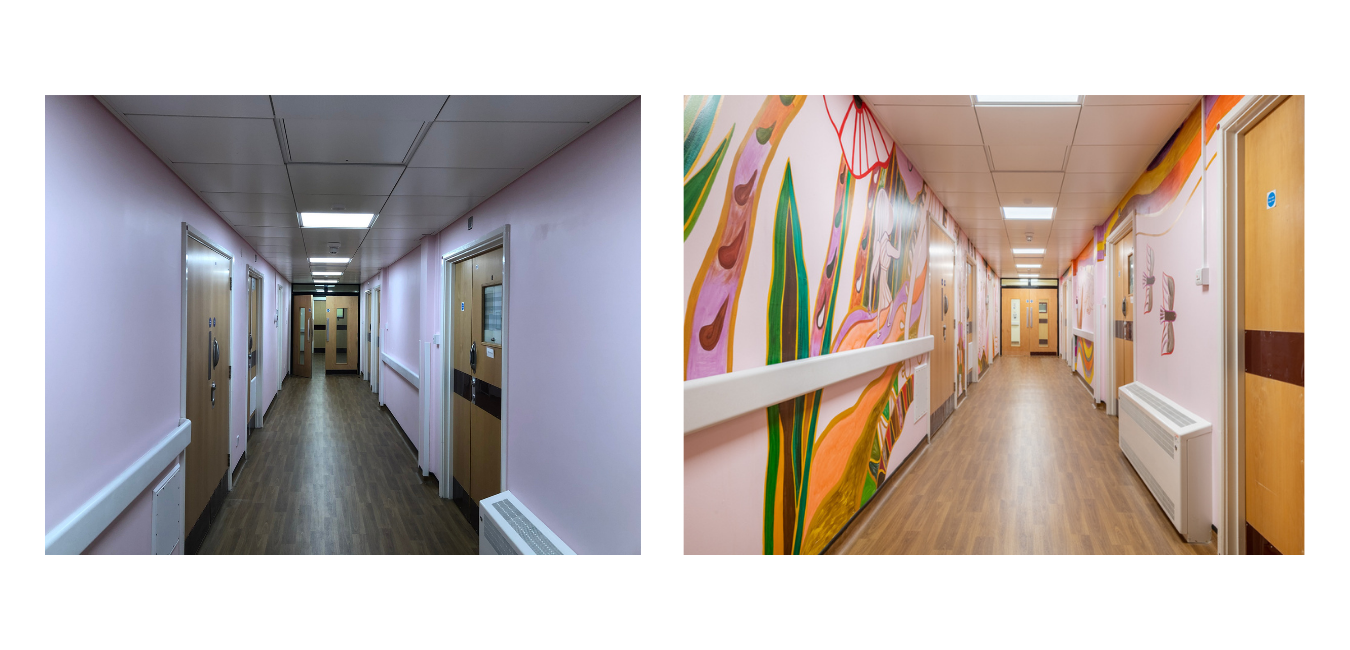
Five year anniversary
Now, five years later, Hospital Rooms has brought colour and life to mental health units across the UK through completing 16 projects and over 100 workshops.
"We almost get a request a day, so we can get hundreds of people getting in touch with us every year asking for projects."
Despite the high demand, the team can only do six or seven projects a year.
One reason is that each project takes time. Alone the initial conversations and fundraising can take a couple of years. Afterwards, the actual project starts. The entire process, from workshops to the final publication of the artwork, usually takes around nine months. It demonstrates the thought and effort that goes into each of them.
Given the heightened demand, it is no surprise the team has grown over the past five years.
"You need a team big enough to manage all the projects", Tim says.
But, the focus does not lie on doing more projects.
"There are quite a few hundred mental health units in the country and our aim isn't to do all of them."
Instead, Tim explains, the aim is to do bigger projects such as complete hospitals and themed projects to reach more people this way.
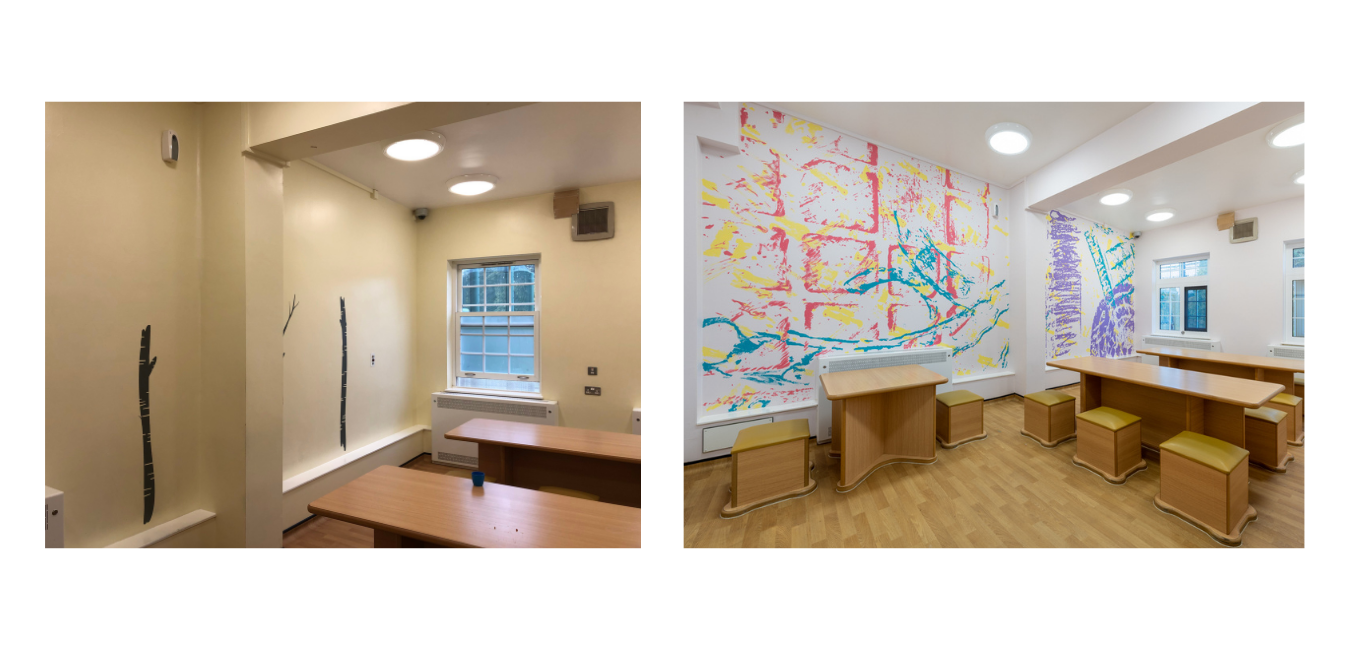
The need for art in inpatient units
What makes Hospital Rooms unique is that they closely involve patients in the creation of the artworks.
During each project, the artists hold workshops with the service users and the staff before creating the actual artwork.
"This means that the artwork is really informed by the people who experienced them."What we find is that people, and especially the patients, are really open to bringing colour and life into these places."
Guidelines by the Royal College of Psychiatrists state that patients in mental health wards should have access to art or creative therapies. This is seen as an expected standard that most services should meet.
Additionally, research and literature suggests that a well-designed and attractive hospital environment can positively affect the patients.
Not only does the final artwork improve the look of the space, it also functions as an intellectual challenge, stimulation and can start conversations in a difficult time, Tim adds.
"If there is a really interesting artwork and a family is visiting, they might find it easier to start talking about an artwork rather than a diagnosis or medication."We've had an overwhelmingly positive response to it."
Complementing existing programmes — or being the only one of its kind
It can be that Hospital Room's workshops complement existing art therapies, but they can also be the only opportunity of that kind in a hospital.
"It's so different unit to unit, hospital to hospital," Tim says.
While some units do have an art therapist, an occupational therapist and a drama therapist and consequently lots of opportunities to make art and music, some units don't provide any kind of creative activity at all.
"We were talking to someone recently who said the only way she could get paper to draw on was by tearing some of the information posters off the wall and drawing on the back of them."Generally, I think we are a bit of an exciting addition to the week because there is nothing like that happening otherwise."
The most recent NHS workforce statistics show that there were 16,226 occupational therapists in all health settings at the end of March 2021, steadily increasing since 2012.
Similarly, the number of professionals providing art, drama and music therapy has been increasing for the past years, although not yet reaching their previous peak of 466 roles in December 2009.
But, the number of staff in these professions is low compared to the overall mental health workforce.
Plans to expand the mental health workforce
Generally, the availability and interests of staff greatly influence a ward's art programme, Tim says. If the staff is into art, they are more likely to make opportunities for the patients. But ultimately, if a unit is understaffed, it often is not able to provide creative activities.
At the end of March 2021, there were 16,660 vacancies for mental health staff within the NHS. This means that these posts were unfilled by permanent or fixed-term staff. The number of vacancies is the difference between the number of actual staff and the planned workforce levels.
But, while there are over 16,000 open vacancies according to NHS data, only a fourth of them were advertised on their website at the beginning of July 2021.
There are national strategies in place for expanding the mental health workforce. In 2019, the Mental Health Implementation Plan outlined that 27,640 more mental health staff would be needed by 2023/24 to achieve the ambition of delivering evidence-based services to an additional 2 million people. This is additional to the planned workforce increase that has been promised in Stepping forward to 2020/21: The mental health workforce plan for England.
4,220 of the new roles by 2023/24 are planned for nursing. Data for mental health nurses between March 2019 and March 2021 shows an increase by 2,443 new nursing roles. Over two thirds of these nurses have been recruited for community services.
But, the most recent published vacancy rates for England suggest that that every tenth mental health nursing position is unfilled.
"Being here feels like sitting in the park"
In 2018, Hospital Rooms partnered with a psychiatric intensive care unit (PICU) in a South London Trust creating eight artworks for the ward.
Later the project was evaluated. Surveys of involved patients and staff indicated that the artwork has positively affected patients' perspectives of the ward.
Before the project, patients described the ward as plain, clinical and lacking bright colours. After the project was completed and eight artworks had been installed, patients said they were more likely to recommend the ward and felt more involved in their care.
Patients described the artworks as 'remarkable'. Associations to family, community and nature transported patients and staff to spaces outside the confined environment of the hospital.
According to the report, a patient said about the new artwork: "Being here feels like sitting in the park."
Similarly, staff said that the artwork inspired a sense of hope and made things feel calmer and more serene on the ward.
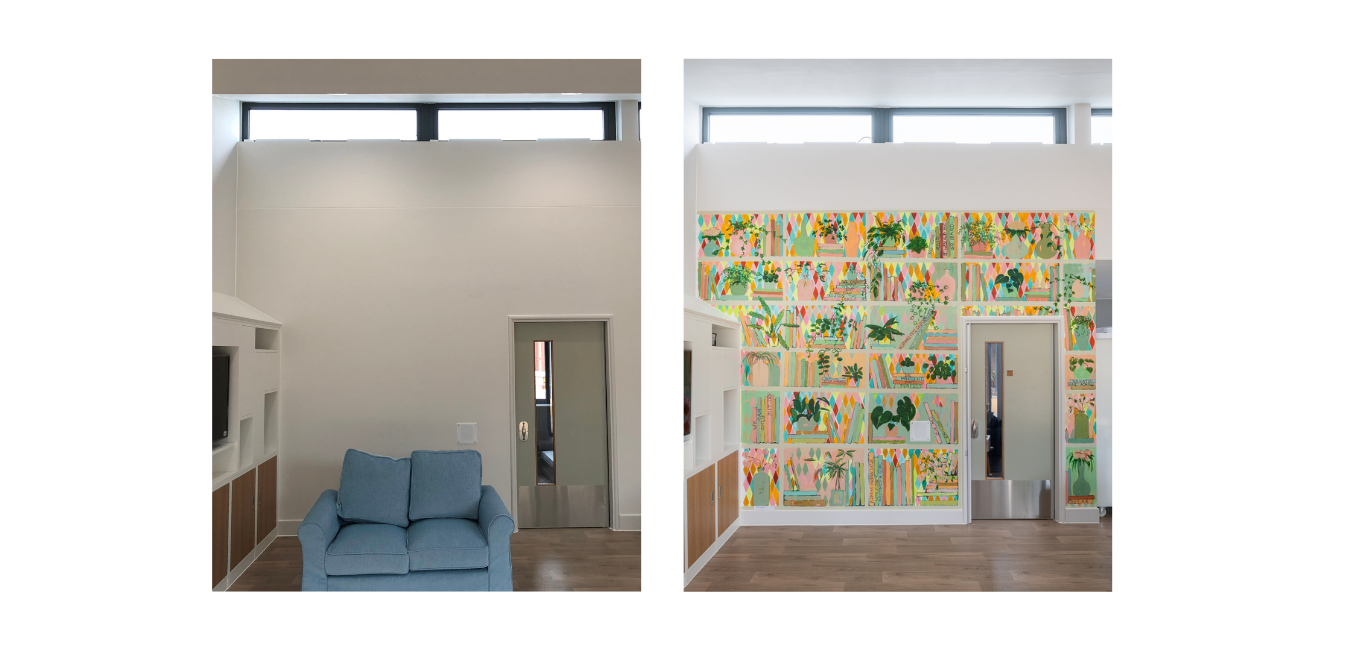
Digital Art School
Last year, when the Covid-19 pandemic struck and the lockdown restricted access to mental health wards, Hospital Rooms had to adapt to the new situation. They set up a Digital Art School.
Seen as an essential service, the team was not stopped from going into wards for long.
"We were seen as an essential service, being an activity for people who had much less stimulation than they would have before the covid pandemic."
But the art school stayed. What originally started to compensate for not being able to go into units, quickly became popular — and permanent.
Now every Thursday at 6pm, any mental health unit or individual person in the world can join live sessions with renowned artists.
"It's quite a nice, creative community where we have hundreds of people making art at the same time on a Thursday afternoon," Tim says.
The sessions are live-streamed into the wards and accessible for everyone who wants to join. For example, providing sessions in British Sign Language enables a deaf unit to follow the workshops.
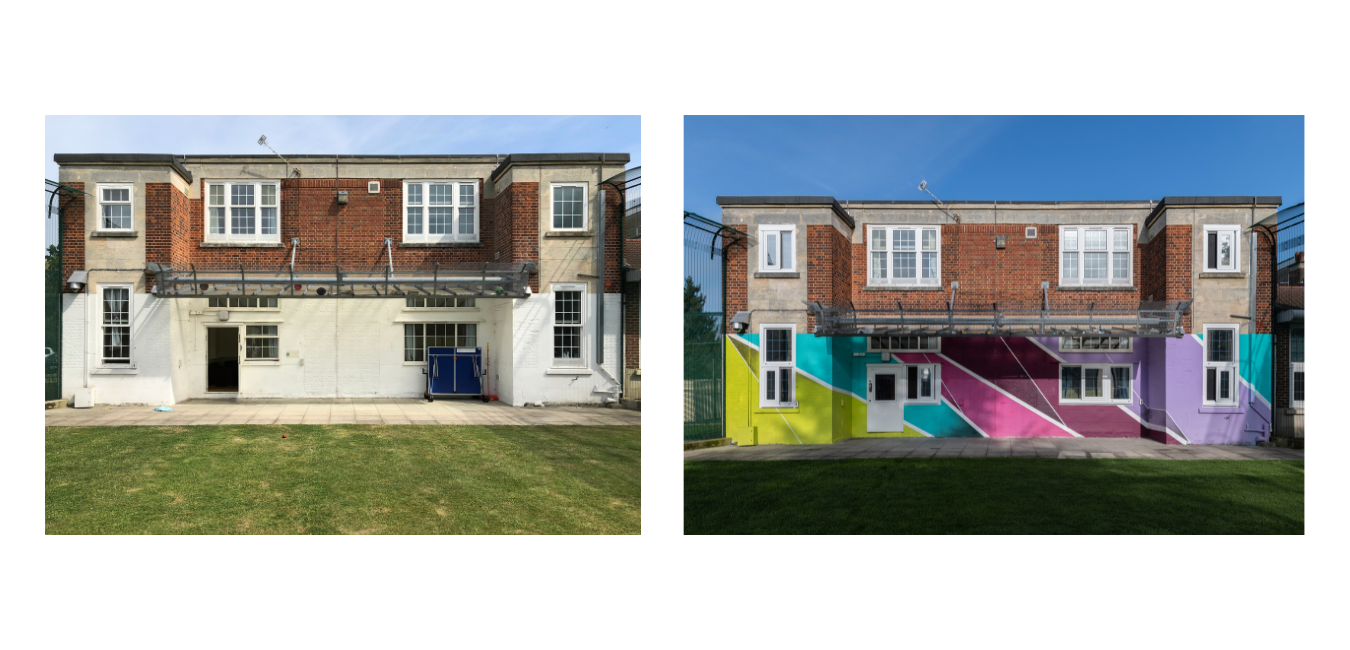
Tackling the disconnect between the arts and the sciences
Besides planning and executing new projects, Hospital Rooms is concentrating on evaluating completed projects.
"I think there sometimes is a bit of a disconnect between the arts and the sciences in a way that artists and art organisations know that what they do is a really good thing but the NHS and the scientists want some data to understand why."
Evaluating and analysing project outcomes might also be a way to get more funding and to convince hospitals about the value and benefits of transforming their inpatient units.
"It's not frivolous, it's not just decoration, it's actually a really important, valuable part of someone's care journey."
Tim hopes that evaluating the projects might pave the way to some other artist-led projects.
Paving the way for others
"The ideal would be that hospital rooms became redundant," Tim says.
If enough other people would do something similar, then Hospital Room's work would no longer be necessary.
"That's what we would love because however big we get as an organisation, we are not going to be able to reach everyone."
For Tim, the positive power of the projects lies in their uniqueness. Every artwork, every interaction is unique. No artwork is duplicated.
Printing the same artwork a hundred times and putting it in every psychiatric intensive care unit would just not have the same meaning, Tim says.
If other organisations took up Hospital Room's approach, the same kind of time and energy would be spread out between different people.
"I hope that in the next few years more people will be inspired by the artwork that has been done until now and try something on their own," Tim says.
"At the moment there are not many people working in these kinds of spaces, but if we can convince the NHS and other people that this is something that can happen safely and that has real benefits to everyone involved, we could pave the way for lots of other people."
Ultimately, Tim has a clear view on art in mental health units: "Access to art and creativity is something that everyone should have."
"We should be rethinking these really dire spaces."
Never want to miss a story again? Subscribe to my newsletter and get notifications for new stories, interviews and data analysis.
